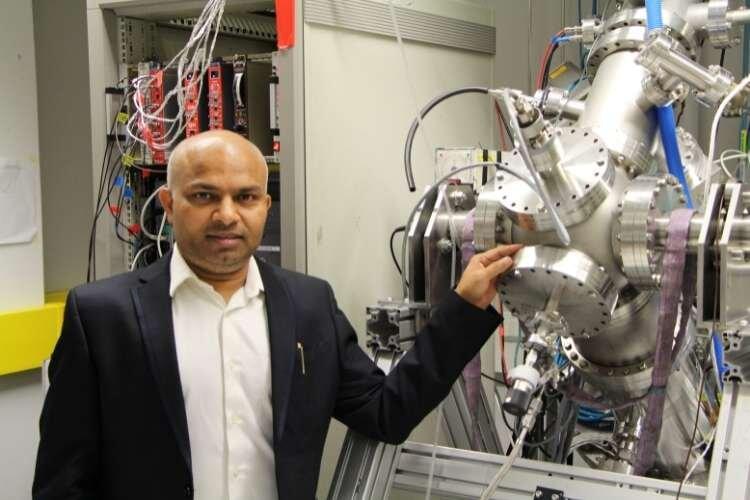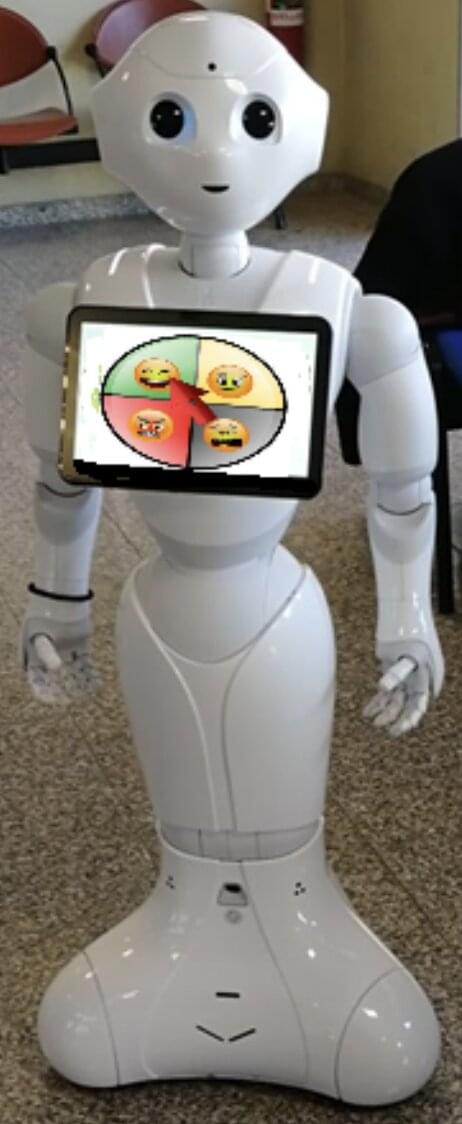Get the latest international news and world events from around the world.


New path for next-generation polymer-based battery design
A breakthrough from Deakin University researchers could help address a major obstacle in the development of environmentally-friendly, cost effective, polymer-based batteries.
The team from Deakin’s Institute for Frontier Materials (IFM) used computer modeling and simulations to design a new type of solid-state polymer electrolyte, showing its potential use in various types of polymer-based solid-state batteries, particularly sodium and potassium batteries.
Polymer-based batteries are able to support high-energy density metals in an all solid-state batteries. They use polymer as the ion conductor rather than flammable organic liquid solvents in current lithium-ion batteries. Therefore, a polymer-based solid-state battery offers an energy storage option that is greener, safer and providing a higher capacity, meaning more energy.

Augmented reality could be the future of paper books, according to new research
“Augmented books, or a-books, can be the future of many book genres, from travel and tourism to education. This technology exists to assist the reader in a deeper understanding of the written topic and get more through digital means without ruining the experience of reading a paper book.”
Power efficiency and pre-printed conductive paper are some of the new features which allow Surrey’s augmented books to now be manufactured on a semi-industrial scale. With no wiring visible to the reader, Surrey’s augmented reality books allow users to trigger digital content with a simple gesture (such as a swipe of a finger or turn of a page), which will then be displayed on a nearby device.

Chesapeake Energy to supply gas to Golden Pass LNG
U.S. oil and gas company Chesapeake Energy has entered into a term gas supply agreement (GSA) with Golden Pass LNG Terminal, a joint venture of QatarEnergy and ExxonMobil.
Under the deal, Chesapeake is to deliver 300 milllion cubic feet per day of gas from Haynesville to Golden Pass’s LNG terminal on the Gulf Coast near Sabine Pass, Texas.
The GSA is to start in 2024 with a 36-month term at an NYMEX-based price less a fixed differential.

Synchrotron analyses could be used to fast-track the development of novel high-strength steel designs
Knowing how strong a piece of steel is, especially the stainless steel used in everything from cars to buildings, is vitally important for the people who make and use it. This information helps to keep people safe during crashes and to prevent buildings from collapsing.
Accurately predicting the strength of a steel prototype based on its microstructure and composition would be indispensable when designing new types of steel, but it has been nearly impossible to achieve—until now.
“Designing/making the best-strength steel is the hardest task,” said Dr. Harishchandra Singh, an adjunct professor at NANOMO and the Centre for Advanced Steels Research at the University of Oulu in Finland.

Red mud is piling up. Can scientists figure out what to do with it?
Practical and glamorous, aluminium is prized for making products from kitchen foil and beverage cans to Tesla Roadsters and aircraft. But the silvery metal—abundant, cheap, lightweight, and corrosion resistant—has a dark side: red mud. This brownish red slurry, a caustic mishmash of metal-and silicon-rich oxides, often with a dash of radioactive and rare earth elements, is what’s left after aluminum is extracted from ore. And it is piling up. Globally, some 3 billion tons of red mud are now stored in massive waste ponds or dried mounds, making it one of the most abundant industrial wastes on the planet. Aluminum plants generate an additional 150 million tons each year.
Red mud has become trouble looking for a place to happen. In 2010, an earthen dam at one waste pond in Hungary gave way, unleashing a 2-meter-high wall of red mud that buried the town of Ajka, killing 10 people and giving 150 severe chemical burns. (See more on the dangers posed by waste dams.) Even when red mud remains contained, its extreme alkalinity can leach out, poison groundwater, and contaminate nearby rivers and ecosystems. Such liabilities, as well as growing regulatory pressure on industry to develop sustainable practices, have catalyzed global efforts to find ways to recycle and reuse red mud. Some researchers are developing ways to extract the valuable rare earth metals, whereas others turn the mud into cement or bricks.
“There is hope here,” says Yiannis Pontikes, a mechanical engineer at KU Leuven. But economic and marketing hurdles remain, and “the clock is ticking” as regulators consider new controls, says Efthymios Balomenos, a metallurgical engineer at the National Technical University of Athens. “At some point we will not be able to produce waste. So, there is an urgent need to make changes.”

Allowing social robots to learn relations between users’ routines and their mood
Social robots, robots that can interact with humans and assist them in their daily lives, are gradually being introduced in numerous real-world settings. These robots could be particularly valuable for helping older adults to complete everyday tasks more autonomously, thus potentially enhancing their independence and well-being.
Researchers at University of Bari have been investigating the potential using social robots for ambient assisted living applications for numerous years. Their most recent paper, published in UMAP’22 Adjunct: Adjunct Proceedings of the 30th ACM Conference on User Modeling, Adaptation and Personalization, specifically explores the value of allowing social robots who are assisting seniors to learn the relationships between a user’s routines and his/her mood.
“Social robots should support older adults with daily activity and, at the same time, they should contribute to emotional wellness by considering affective factors in everyday situations,” Berardina De Carolis, Stefano Ferilli and Nicola Macciarulo wrote in their paper. “The main goal of this research is to investigate whether it is possible to learn relations between the user’s affective state state and daily routines, made by activities, with the aid of a social robot, Pepper in this case.”

MIT scientists create color-shifting films inspired by 19th-century holography
Potential applications include pressure-monitoring bandages, shade-shifting fabrics.
The bright iridescent colors in butterfly wings or beetle shells don’t come from any pigment molecules but from how the wings are structured—a naturally occurring example of what physicists call photonic crystals. Scientists can make their own structural colored materials in the lab, but it can be challenging to scale up the process for commercial applications without sacrificing optical precision.

A crab-inspired artificial vision system for both terrestrial and aquatic environments
To efficiently navigate real-world environments, robots typically analyze images collected by imaging devices that are integrated within their body. To enhance the performance of robots, engineers have thus been trying to develop different types of highly performing cameras, sensors and artificial vision systems.
Many artificial vision systems developed so far draw inspiration from the eyes of humans, animals, insects and fish. These systems have different features and characteristics, depending on the environment in which they are designed to operate in.
Most existing sensors and cameras are designed to work either in on the ground (i.e., in terrestrial environments) or in water (i.e., in aquatic environments). Bio-inspired artificial vision systems that can operate in both terrestrial and aquatic environments, on the other hand, remain scarce.